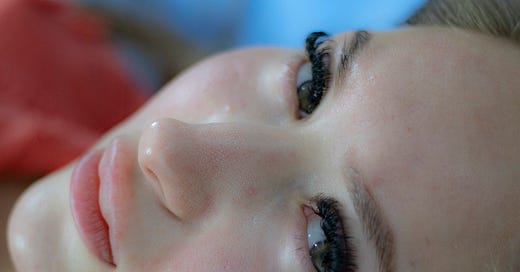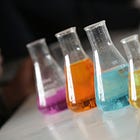Introduction
In this article, we look at how various types of fungus and yeast can eat up the building blocks of Dopamine, and hence may play a role in apparent Dopamine deficiency conditions. It is important to stress here at the outset that, in my view, and model, the fungal overgrowths are not causal of Dopamine deficiency, but can however exacerbate it.
The real issue is that those of us who are stuck in a freeze-type stress response have bodies and brains (alterations to pH and temperature, disrupted endocrine chemistry, immune system compromise, impaired electric fields of the Nervous System, etc) which make us prone to imbalances in our microbiomes. This includes the possibility that some ubiquitous fungal elements get out of hand. In other words, in my view, the fungal overgrowths are a result of being stuck in freeze, they don’t cause it.
Although, at first glance, these fungal impacts on Dopamine are disturbing, this is actually good news in the sense that they are reversible [principally by learning to inhabit the calm, relaxed states in which the body and brain can deal with them, by detoxifying and bringing the microbiome back into balance]. Hence this is actually a more hopeful story than “irreversible dopamine neuron cell death” as the explaination.
A quick reminder that the basic biochemical pathway for creating Dopamine in the brain and body is
PHENYLALANINE (from food) -> TYROSINE (from food or made in body from Phenylalanine) -> L-DOPA (from food or made in the body from Tyrosine) -> DOPAMINE.
Phenylalanine and Fungus
Interestingly, if a little disturbingly, fungal factors in the microbiome, and specific fungal infections, can interfere with the Dopamine biochemical production pathways. For example, a fungal toxin called “Ochratoxin A”:
“Ochratoxin is a toxin produced by different Aspergillus and Penicillium species, one of the most-abundant food-contaminating mycotoxins. It is also a frequent contaminant of water-damaged houses and of heating ducts. Human exposure can occur through consumption of contaminated food products, particularly contaminated grain and pork products, as well as coffee, wine grapes, and dried grapes. The toxin has been found in the tissues and organs of animals, including human blood and breast milk.”
Furthermore,
“Ochratoxin A has a strong affinity for the brain, especially the cerebellum. Ochratoxin causes acute depletion of striatal dopamine, [as in] Parkinson’s disease, but it did not cause cell death in any of brain regions examined.”
According to a science journal article, “STUDIES OF OCHRATOXIN A-INDUCED INHIBITION OF PHENYLALANINE HYDROXYLASE AND ITS REVERSAL BY PHENYLALANINE”, the impact of this fungal toxin on Dopamine appears to occur by disrupting a key step in the biochemical reaction pathway of the neurotransmitter. In particular, it inhibits the enzyme Phenylalanine Hydroxylase, the chemical catalyst required for fast enough conversion of Phenylalanine into Tyrosine. This inhibition results in a build up of Phenylalanine, hence creating effects similar to the genetic Phenylketonuria (PKU) disease.
The resulting build up of Phenylalanine will also block L-Dopa from getting out of the gut and across the blood-brain barrier, because the Phenylalanine preferentially binds to and blocks access to the Large Amino Acid Transporter which L-Dopa needs in order to ferry it across these membranes. Since Dopamine itself cannot cross the blood-brain barrier, sufficient L-Dopa is needed to generate Dopamine in the brain, and hence the fungal overgrowth may block this.
Malassezia and L-Dopa
According to the Wikipedia page for Malassezia:
“Malassezia is a genus of fungi, naturally found on the skin surfaces of many animals, including humans. Allergy tests for this fungus are available.”
Moreover,
“Investigations show that the Malassezia species causing most skin disease in humans, including the most common cause of dandruff and seborrhoeic dermatitis [SD]. As the fungus requires fat to grow, it is most common in areas with many sebaceous glands: on the scalp, face, and upper part of the body. When the fungus grows too rapidly, the natural renewal of cells is disturbed, and dandruff appears with itching (a similar process may also occur with other fungi or bacteria).”
Dandruff and SD are very common in folks with chronic conditions.
Importantly, apparently Malassezia actually feeds on L-Dopa, according to the science aritcle “THE ROLE OF L-DOPA ON MELANIZATION AND MYCELIAL PRODUCTION IN MALASSEZIA FURFUR”! This infers overgrowth of this fungus may deplete sources of L-Dopa in the body, turning it into Melanin instead of Dopamine, again preventing enough L-Dopa getting to the brain and being converted to Dopamine there. Hence this could presumably contribute to symptoms, as well as impact on the effectiveness of L-Dopa supplementation.
This link goes even deeper, because the fungus is not just on the skin, but may get into internal organs including the brain. According to the science article “Malassezia and Parkinson's Disease”
“Intriguingly, Malassezia was found in vitro to produce melanin from exogenous L-DOPA. In addition, L-DOPA triggered hyphal growth which is thought to be the most invasive Malassezia morphology, allowing it to penetrate host cells and tissue. This raises the possibility that Malassezia, if present in the CNS [Central Nervous System, especially the brain], would be more invasive in naturally L-DOPA rich regions such as catecholaminergic neurons of the substantia nigra.”
“Neuromelanin in the substantia nigra might be produced by Malassezia following invasion of dopamine neurons, as Malassezia consume intracellular lipid droplets in these neurons. Since neurons are long-lived, melanin of fungal origin could accumulate following repeated transient exposure to Malassezia. A similar mechanism could explain the presence of melanin in the basal region of prostate secretory epithelial cells, where lipid droplets are found”.
This may help explain why people with PD need more and L-Dopa as time goes on, because the L-Dopa is feeding the fungus, and as it proliferates it consumes more and more of the L-Dopa supplement. So once again using L-Dopa as a drug for Dopamine deficiency may not be the best of ideas.
Intriguingly, Parkinson’s is now known to have a musky specific smell, which both dogs and humans can detect, and this smell has been linked directly to Malassezia.
“This change in sebum could be the perfect media for certain lipophilic bacteria and yeast (Malassezia yeasts for example) to thrive, changing the person’s skin microbiome. Changes in the microbiome, in turn, create the unique smell of PD and explain why the smell gets stronger each year, as microbial colonies proliferate with the worsening of the disease.”
Links between Malassezia infections and PD have also been directly, e.g. in “LABORATORY-BASED STUDY ON PATIENTS WITH PARKINSON’S DISEASE AND SEBORRHEIC DERMATITIS: THE PRESENCE AND DENSITY OF MALASSEZIA YEASTS, THEIR DIFFERENT SPECIES AND ENZYMES PRODUCTION.”
Candida in the Brain
Candida is another fungus which can get into the Nervous System and brain, e.g. Traversal of Candida albicans across Human Blood-Brain Barrier In Vitro.
A link between Candida overgrowth and Dopamine deficiency conditions such as Parkinson’s has also been made, e.g. in the science article “Chronic polysystemic candidiasis as a possible contributor to onset of idiopathic Parkinson's disease”. In this case the issue is that Candida generates aldehydes as a waste product of its metabolism, and folks with Dopamine dysregulation are very prone to aldehyde toxicity:
What Can We Do About It?
One can try various anti-fungal strategies, such as diets, medications and natural remedies, light therapies, and see if this improved things [however, some care needs to be taken as rapidly killing of fungal infections can cause severe “die off” toxicity, which can greatly exacerbate existing symptoms, i.e. temporarily making things worse].
However, to re-iterate, in my view the fungal overgrowths are not causal of the freeze symptoms. Indeed, as pointed out in the papers cited above:
“It is important to note that Malassezia’s presence is not synonymous with disease: in the vast majority of individuals, Malassezia colonize the body without causing symptoms.”
“The change of neurotransmitters secreted by the neurons affected by PD could stimulate sebum production by exocrine glands… perfect media for… yeast”
So instead, the body and brains of folks who are stuck in the freeze response are likely breeding grounds for microbiome imbalances. Then the key is to de-stress our lives, including addressing trauma, and learn how to become calm and relaxed for long enough time that our Nervous System is able to deal with these imbalances and detoxify naturally.
This was adapted from my new module on All Things Dopamine of my online course:
This module will be a compendium (an e-book’s worth) of all that I've learned and researched about Dopamine, and everything that can affect it. I am continuing to build the module. It is vital need-to-know material, not only for folks with chronic conditions that are associated with low Dopamine, from Parkinson's Disease, Dystonia, ADHD to Fibromyalgia and Ehler's Dansos Syndrome, but also for those just interested in optimizing their health and well-being.
The main purpose is to show that, for a myriad of reasons, Dopamine deficiency conditions are reversible, not due to cell death, and hence to bring back hope.







Dr Gary- may i call you that, my friend? - you have built up quite a compendium of writings on autonomic dysregulation, and your biochemical knowledge is admirable. i never thought so much about dopamine (and still don't) as you do, but really enjoy the way your tales consistently twist back there. And as you know, i agree with you 100% - no! make that at least 200% - about the role of trauma and ACES in our pathologies. Idiopathic? Find the trauma Sherlock, and walk it home. Thank you for doing the research, and good luck with your new book/program!
Hi Gary, sorry I haven't gotten to the study on Malassezia yet - promise I haven't forgotten!